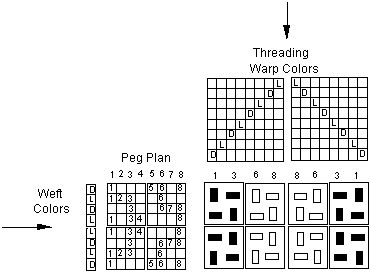
Appendix C Turning Points in Double Weave
In Chapter II, Section II there is a discussion of how to create horizontal symmetry by adding two extra threads in the threading and how to achieve vertical symmetry by adding two extra treadlings or pegging bars. Three different situations are analyzed in this appendix to justify these statements. In the first, no extra threads or pegging bars are added. In the second, one extra warp thread and one extra pegging bar are added. In the third, two extra warp threads and two extra pegging bars are added. It is the third example that leads to the correct weave structure. For each example, both sides of the double woven fabric will be developed so that you can see that the errors may show up when viewed from above and other errors can be observed when viewed from below the fabric.
I. No added threads or treadlings.
The first half of the threading and the peg plan are reversed at the turning point without any additions to either. In making these weave structure diagrams it is only necessary to deal with the grid points where a single thread is being raised and this is shown across the top of the squares on the right.
A. Looking at the fabric from the above. Notice that the color orders for both the warp and the weft change at the turning points which are marked by the arrows.

Errors clearly occur at each of the turning points. Two warp threads on shaft 8 weave together. The fourth weft pick is repeated which means that two weft picks lie in the same shed.
B. Looking at the fabric from below. The peg plans are the complements of the peg plans used when looking at the fabric from above. (The threads not raised when viewed from above are in essence raised when viewed from below.) Those sections that are dark (light) when viewed from above become light (dark) when viewed from below,
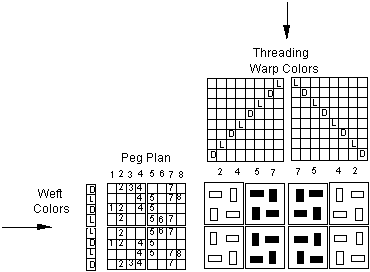
The same types of errors are visible when the fabric is viewed from below.
II. One additional thread and one additional peg plan.
A. Looking at the fabric from above. Notice that the color order for both the warp and the weft remains DLDL.
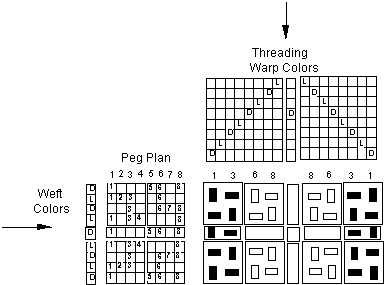
Errors still occur where the sections based on shafts 5-8 join at the turning points in both the warp and weft directions. Notice however that no errors occur in the warp direction where the sections based on shafts 1-4 join. Progress is being made.
B. Looking at the fabric from below.
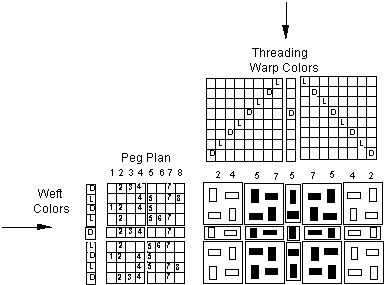
There are no errors now looking at the cloth from below. More progress.
III. Two extra warp threads and two additional peg plans are added. Notice that the color order in both the warp and the weft reverse after the turning points.
A. Looking at the fabric from above.
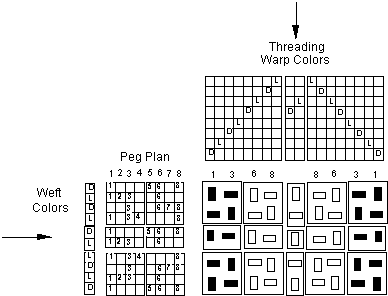
There are no weaving errors looking at this side of the double woven cloth.
B. Looking at the fabric from below.
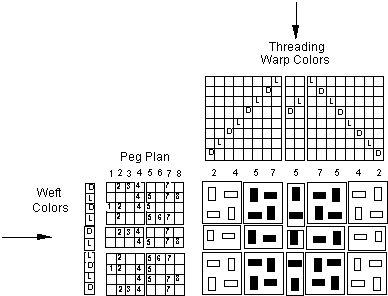
There are no weaving errors in the bottom layer of the double weave cloth.
Conclusions: